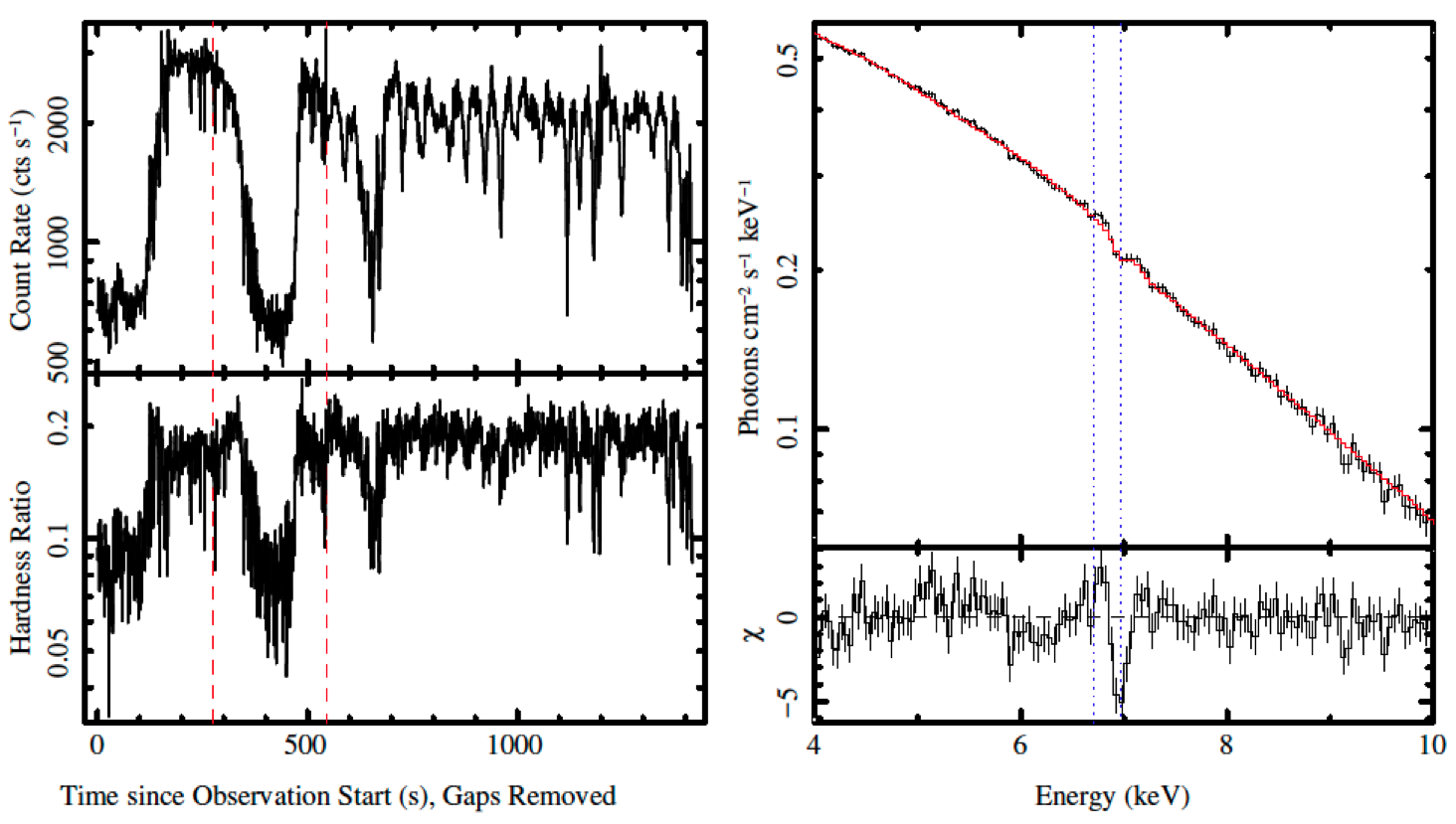NICER / ISS Science Nugget for June 7, 2018NICER observes unusual variability in GRS 1915+105Last week, NICER's first paper on black holes (titled "A Persistent Disk Wind in GRS 1915+105 with NICER" by Neilsen et al.) was accepted for publication in The Astrophysical Journal Letters. This is NICER's 7th peer-reviewed science result to be published. GRS 1915+105 is not a typical stellar-mass black hole: it has been in outburst since 1992, its relativistic jets could span our Solar System 60 times over, and its ionized winds can carry > 2 Earth masses worth of gas away from the black hole every year. But what really makes this black hole a black sheep is its variability – 14 distinct states of bizarre oscillations on timescales ranging from seconds to hours. One example is shown in the figure below, with strong variability in the NICER light curve (left) and an absorption line from the wind in the NICER spectrum (right).
One of the main questions for such an object is how to make sense of its behavior. Previous work has suggested a trade-off between the disk, wind, and jet, but there are few observations capable of exploring this relationship in detail; this is where NICER excels. NICER looked at GRS 1915+105 over three dozen times during 2017, tracking the wind signatures for correlating with the rest of the system's behavior. We found that the wind was remarkably persistent: it was detectable in more than 80% of our observations! Our results also indicate that more variable light curves are associated with weaker wind signatures, which we interpret as evidence that, like the jet, the wind can quickly toggle on and off in response to the rapid variability seen from the disk. NICER
|



